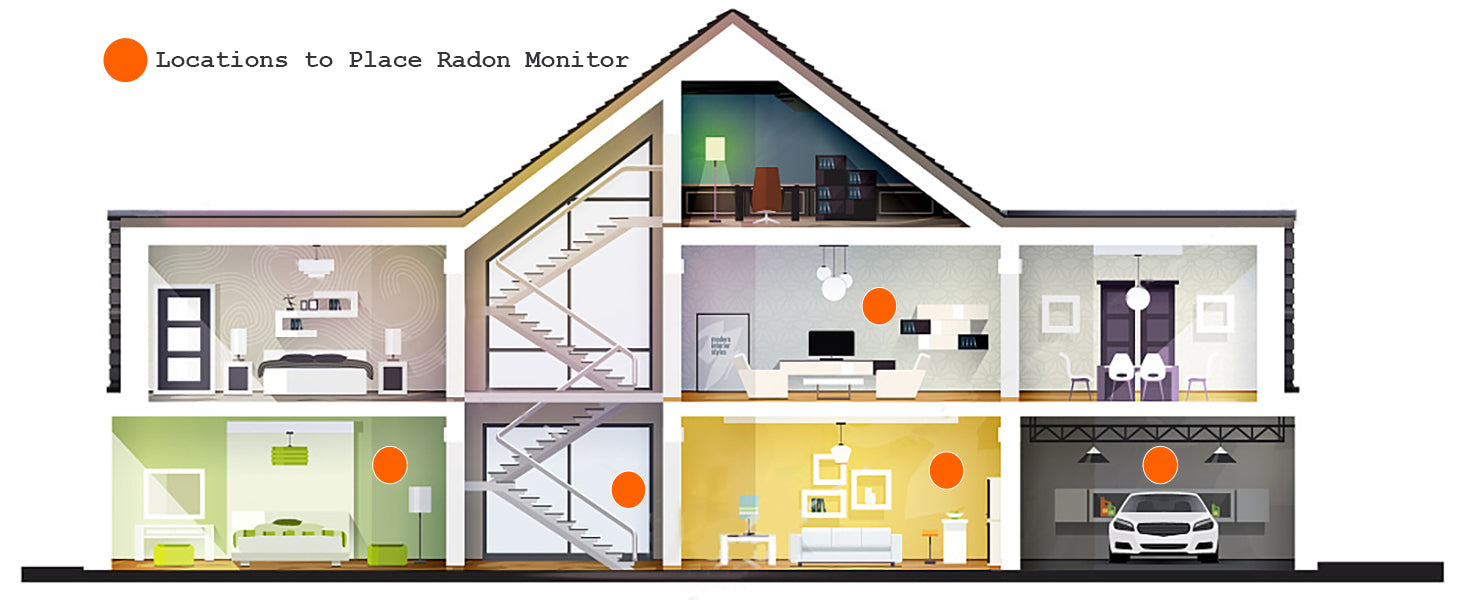
Radon
Radon poses a significant but preventable health risk. Proactive testing and mitigation can reduce lung cancer incidence, particularly among smokers. Public health efforts emphasize awareness and accessible solutions to minimize exposure.
What is Radon?

Radon (Rn) is a radioactive noble gas (element 86), colorless, odorless, and tasteless, formed naturally from the decay of uranium and thorium in soil, rock, and water. It is part of the decay chain starting with uranium-238, which transitions through radium-226 before becoming radon-222. Due to its gaseous state and chemical inertness, radon can migrate through soil and accumulate in enclosed spaces like homes.
How Does Radon Enter Homes?
Radon infiltrates buildings through cracks in foundations, gaps around pipes, and other openings. It may also dissolve in groundwater, releasing into the air when water is used. Homes in areas with uranium-rich geology (e.g., granite bedrock) or with poor ventilation are particularly susceptible to high radon levels.
Health Risks of Radon Exposure
-
Lung Cancer: Radon is the second leading cause of lung cancer globally after smoking. When inhaled, radon decays into solid radioactive isotopes (e.g., polonium-218 and -214), which emit alpha particles. These particles damage lung tissue DNA, leading to mutations and potentially cancer. The risk is dose-dependent, with prolonged exposure to high levels (e.g., >4 pCi/L or 150 Bq/m³) significantly increasing cancer risk.
-
Synergy with Smoking: Smokers exposed to radon face a 10x higher risk of lung cancer than non-smokers due to compounded cellular damage.
-
Other Risks: While lung cancer is the primary concern, some studies suggest potential links to other cancers, though evidence is less conclusive. Ingestion of radon via water poses minimal risk compared to inhalation.
Detection and Mitigation
- Testing: Essential due to radon's undetectability without specialized kits. Both short-term (2–7 days) and long-term (90+ days) tests are available.
- Mitigation: If levels exceed recommended thresholds (4 pCi/L in the US; 2.7 pCi/L per WHO), solutions include:
- Sub-slab depressurization: Diverts radon from soil via vents.
- Sealing cracks and improving ventilation.
- Installing air exchangers or filtration systems.
Global Variation and Guidelines
Radon levels vary geographically, with higher concentrations in regions with granite or phosphate-rich soils. Organizations like the EPA and WHO provide guidelines for action levels and mitigation. Regular testing is advised globally, as radon exposure is a universal concern.
Conclusion
Radon poses a significant but preventable health risk. Proactive testing and mitigation can reduce lung cancer incidence, particularly among smokers. Public health efforts emphasize awareness and accessible solutions to minimize exposure.
Featured collection
-
Example product title
Regular price $19.99 USDRegular priceUnit price / per -
Example product title
Regular price $19.99 USDRegular priceUnit price / per -
Example product title
Regular price $19.99 USDRegular priceUnit price / per -
Example product title
Regular price $19.99 USDRegular priceUnit price / per